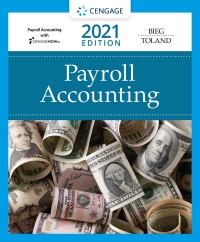Case the videlade Strategy The Soonie Company is a manufacturer of videotapes. Being a leader in its field, the company runs national ads comparing its products to those of Pany, its major competitor. Soonie uses three advertising strategies: az-a direct attack on their competitor; az-an indirect attack; and an-no attack at all. Pany is a more conservative company. It uses these advertising strategies by-"our products are of the highest quality": by -- our products give you more for your money": and by - 'sure, you can buy other products, but... Soonie's advertising budget amounts to hundreds of thousands of dollars annually. Basic ad decisions are made monthly. Recent sales results indicate that the company's market share actually fluctuates too much and has periodic sharp declines. In its last meeting the board of directors asked Soonie's president to study the situation. Yuki White, the newly appointed director of marketing research, was authorized to investigate the problem. Using computerized time series and regression analyses, she attempted to find the relationship between advertising policies and sales levels. After analyzing historical data for the past few years, she decided there was no correlation between the two. Then she realized that Soonie's market share also depended on Pany's strategy. However, it was impossible to know exactly what the competition had in mind in the past. "We should record what level of ads Pany uses " Yuki thought to herself. For a moment she felt hopeless. Then she called a meeting of all key sales representatives, asking them to indicate the effectiveness of Soonie's ads in relation to various strategies used by Pany. Ad effectiveness was based on the following four-point scale: 4 - excellent: 3 - good; 2-fairs and 1 - poor Although the sales reps disagreed on several of the possible results, she constructed an average response that looked like this If Soonie employs strategy a, and Pany employs b, the response to Soonie's strategy is good. Similarly, for the other possibilities the results were: 1 Sconte Employs I Pan Employs The Iesults for Soonle by by by by b by 2 Good Excellent Fair Poor Good Fair Fair Good Excellent A3 by by A quick review of these results indicated that there was no one superior strategy. Re- sults in the range of poor to fair were possible for each of Soonie's alternatives. "I can see now why my computerized programs failed to show any conclusive results. I wish we had a better information system," Yuki sighed. I At this point, the company's president called Yuki and requested "specific recom- mendations for future ad strategies." For a moment, Yuki thought that she should tell him that she had found no relationship between strategy and sales level. Then she fig. ured that this was probably not true. What should Yuki do? Consider such factors as the lack of collusion between the competitors, possible cooperation between the competitors, and overall market size. Case the videlade Strategy The Soonie Company is a manufacturer of videotapes. Being a leader in its field, the company runs national ads comparing its products to those of Pany, its major competitor. Soonie uses three advertising strategies: az-a direct attack on their competitor; az-an indirect attack; and an-no attack at all. Pany is a more conservative company. It uses these advertising strategies by-"our products are of the highest quality": by -- our products give you more for your money": and by - 'sure, you can buy other products, but... Soonie's advertising budget amounts to hundreds of thousands of dollars annually. Basic ad decisions are made monthly. Recent sales results indicate that the company's market share actually fluctuates too much and has periodic sharp declines. In its last meeting the board of directors asked Soonie's president to study the situation. Yuki White, the newly appointed director of marketing research, was authorized to investigate the problem. Using computerized time series and regression analyses, she attempted to find the relationship between advertising policies and sales levels. After analyzing historical data for the past few years, she decided there was no correlation between the two. Then she realized that Soonie's market share also depended on Pany's strategy. However, it was impossible to know exactly what the competition had in mind in the past. "We should record what level of ads Pany uses " Yuki thought to herself. For a moment she felt hopeless. Then she called a meeting of all key sales representatives, asking them to indicate the effectiveness of Soonie's ads in relation to various strategies used by Pany. Ad effectiveness was based on the following four-point scale: 4 - excellent: 3 - good; 2-fairs and 1 - poor Although the sales reps disagreed on several of the possible results, she constructed an average response that looked like this If Soonie employs strategy a, and Pany employs b, the response to Soonie's strategy is good. Similarly, for the other possibilities the results were: 1 Sconte Employs I Pan Employs The Iesults for Soonle by by by by b by 2 Good Excellent Fair Poor Good Fair Fair Good Excellent A3 by by A quick review of these results indicated that there was no one superior strategy. Re- sults in the range of poor to fair were possible for each of Soonie's alternatives. "I can see now why my computerized programs failed to show any conclusive results. I wish we had a better information system," Yuki sighed. I At this point, the company's president called Yuki and requested "specific recom- mendations for future ad strategies." For a moment, Yuki thought that she should tell him that she had found no relationship between strategy and sales level. Then she fig. ured that this was probably not true. What should Yuki do? Consider such factors as the lack of collusion between the competitors, possible cooperation between the competitors, and overall market size









